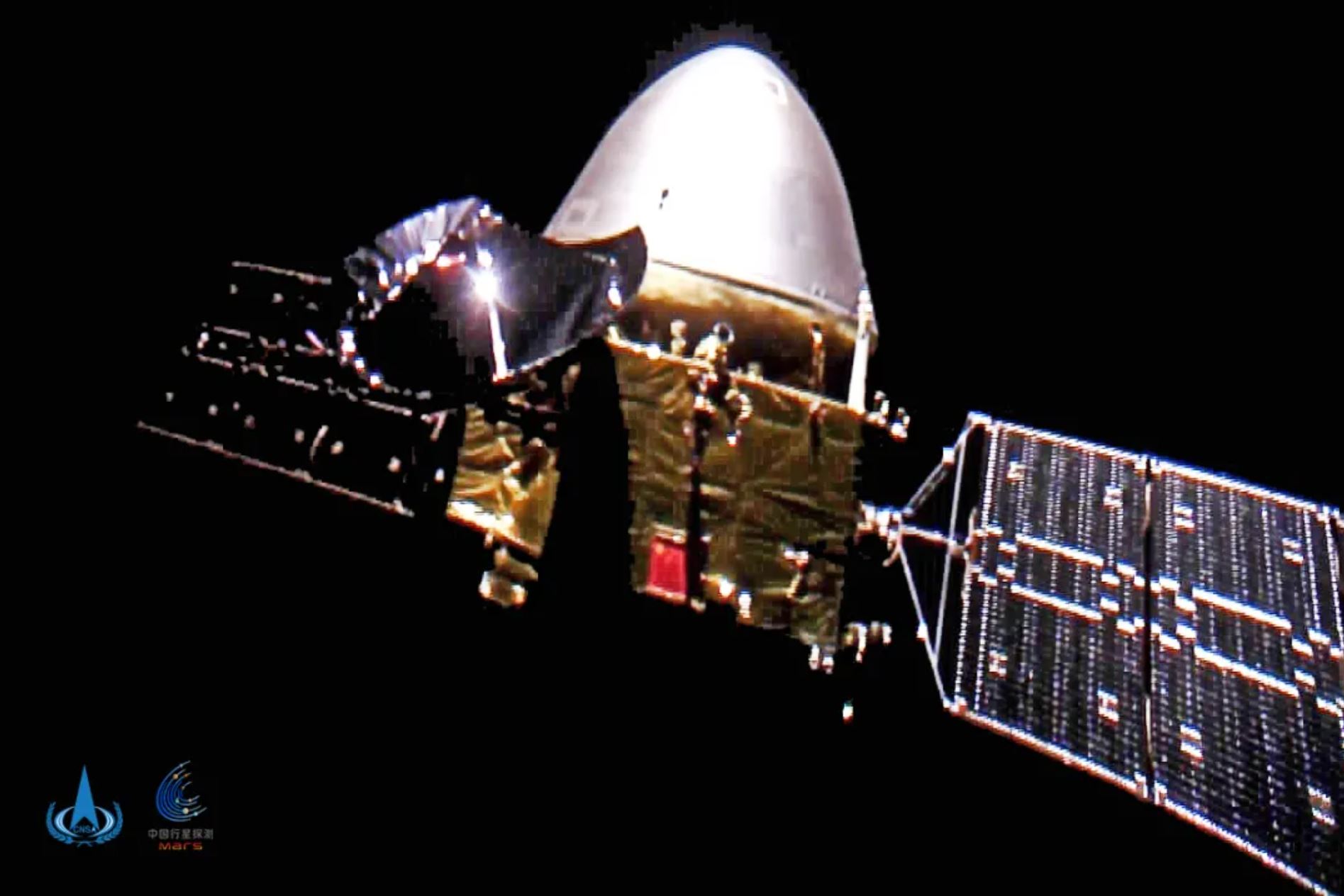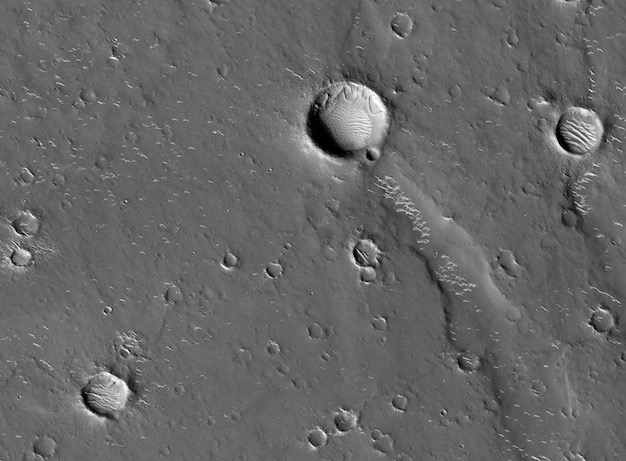China chooses landing site for its Tianwen-1 Mars rover
The rover will touch down inside the huge impact basin Utopia Planitia.

China has apparently chosen a primary landing site for its Tianwen-1 Mars rover ahead of the spacecraft's arrival at the Red Planet in February 2021.
Tianwen-1, consisting of an orbiter and a lander-rover duo, is currently on its way to Mars following launch on a Long March 5 rocket on July 23. Mission team members have already tested its science instruments.
The latest official update from China stated that Tianwen-1 had traveled a total of 85.12 million miles (137 million kilometers) as of Sept. 11 and was 9.5 million straight-line miles (15.3 million km) from Earth at the time.
China has already stated that the rover will attempt to land in a designated area of Utopia Planitia, a huge basin formed by a large impact far back in Mars' history. The area is to the south of NASA's Viking 2 landing site and northwest of the spot where the American space agency's Mars InSight lander touched down in November 2018.
Related: Here's what China's Tianwen-1 Mars mission will do

However information published in an article (in Chinese) in the official China Space News publication following launch in July provides a specific primary landing site. The article reported landing coordinates of 110.318 degrees east longitude and 24.748 degrees north latitude, within the southern portion of Utopia Planitia. Online versions of the article have since been edited to remove the coordinates; however, these remain published by sources citing the article.
The area appears to provide a relatively safe place for a landing attempt but is also of great scientific interest, according to Alfred McEwen, director of the Planetary Image Research Laboratory at the University of Arizona and the principal investigator of the powerful HiRISE camera aboard NASA's Mars Reconnaissance Orbiter.
Get the Space.com Newsletter
Breaking space news, the latest updates on rocket launches, skywatching events and more!
McEwen described the site as typical southern Utopia Planitia, adding that it is "mostly flat and smooth but with craters, aeolian [wind-sculpted] ridges, and a few boulders."
The area has been "interpreted as covered by mud flows by some scientists, so ancient deep groundwater may have existed, and this could be an interesting location to study with a rover," McEwen told Space.com.
McEwen added that he's not aware of any evidence suggesting that there may be water ice at or near the surface of the Tianwen-1 landing site.
The yet-to-be-named, roughly 530-lb. (240 kilograms) solar-powered Tianwen-1 rover will investigate the surface soil characteristics and potential water-ice distribution with its Subsurface Exploration Radar instrument. China's Chang'e 4 rover uses a similar instrument to peer beneath the surface of the far side of the moon.
The Mars rover will also analyze surface material composition and characteristics of the Martian climate and environment on the surface.
China has twice landed on the moon, with Chang'e 3 in 2013 and Chang'e 4 on the far side in 2019. However Tianwen-1 is China's first independent interplanetary mission, and landing on Mars, with its thin atmosphere, remoteness and different gravity field, presents new and greater challenges.
After arrival in Mars orbit in February next year, Tianwen-1 will spend two to three months preparing for the rover's landing attempt, using high- and medium-resolution cameras to assess the site and the conditions.
It will then attempt entry, descent and landing. The spacecraft will separate from the orbiter and enter the atmosphere, being slowed by a conical aeroshell. Next, a parachute will further slow the craft before retropropulsion rockets provide the final deceleration for the descent onto the Martian surface.
The low elevation of Utopia Planitia means there will be more time and atmosphere for the entry spacecraft to slow down and safely descend to the surface.
If it lands successfully, the Tianwen-1 rover is expected to be in operation for about 90 Martian days, or sols.
The Tianwen-1 orbiter will provide a relay communication link to the rover while performing its own scientific observations for one Martian year. (One sol is about 40 minutes longer than an Earth day. One Martian year is 687 Earth days.)
Follow us on Twitter @Spacedotcom and on Facebook.
Join our Space Forums to keep talking space on the latest missions, night sky and more! And if you have a news tip, correction or comment, let us know at: community@space.com.

Andrew is a freelance space journalist with a focus on reporting on China's rapidly growing space sector. He began writing for Space.com in 2019 and writes for SpaceNews, IEEE Spectrum, National Geographic, Sky & Telescope, New Scientist and others. Andrew first caught the space bug when, as a youngster, he saw Voyager images of other worlds in our solar system for the first time. Away from space, Andrew enjoys trail running in the forests of Finland. You can follow him on Twitter @AJ_FI.
